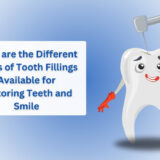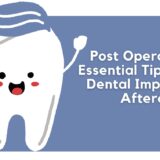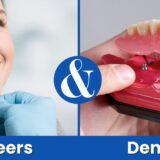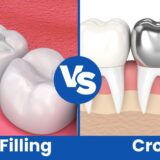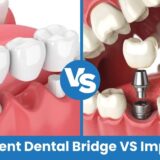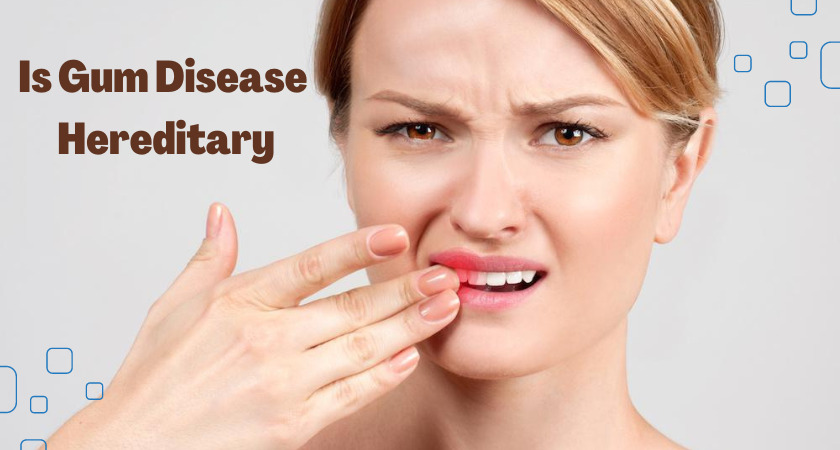You must know that we inherit many features from our parents and family. You may be tall because your dad is tall, or you have curly hair because of your mom. Amongst other common hereditary diseases, is gum disease heritable as well?
Find out the relationship between gum disease and your family history and measures to protect your teeth and gums.
Is periodontal gum disease hereditary?
In the strict sense, periodontal gum disease is not hereditary. However, studies suggest genetics could influence a person’s susceptibility to gum disease.
Studies have shown that periodontal disease seems to have some genetic component, especially for severe conditions that appear early in the patient’s life. For example, aggressive periodontitis – a relatively uncommon disease that causes rapid bone loss around certain teeth – is common among family members.
Further, some studies also suggest a possible genetic link between our immune response and the development of chronic diseases. However, the relationship between genetics and gum diseases is still under investigation.
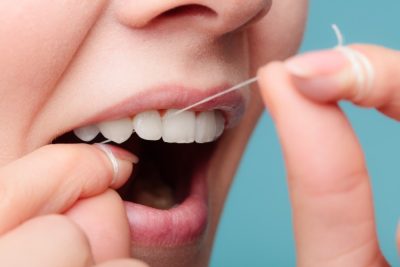
Types of gum disease
Gum disease is an infection of the tissues and bones supporting teeth. Gingivitis and periodontitis are the two primary types of gum disease. The different types include:
-
Gingivitis
Accumulation of plaque and tartar on teeth causes gingivitis. It is the mildest form of gum disease. You likely have gingivitis if your gums are red, swollen, sore, or bleeding easily. However, it is a reversible stage. Therefore, your gums can be restored with professional treatment and proper oral home care.
-
Periodontitis
Also known as Degenerative gum disease, it is an advanced-stage disease and can lead to tooth loss if left untreated. It affects your gum tissues, spreads below the gum line, and deteriorates your jawbone, causing tooth loss.
-
Aggressive Periodontitis
Aggressive periodontitis – a form of periodontitis – progresses rapidly and affects otherwise healthy individuals. It is characterized by the rapid destruction of the supporting tissues of the teeth, including the gums, alveolar bone, and periodontal ligaments. Destruction of the gingival tissue, gingival ligaments, and bone occurs rapidly and can be caused by genetic factors.
-
Chronic Periodontitis
Chronic periodontitis progresses slowly and is characterized by inflammation and loss of attachment of the gums to the teeth. It results from the accumulation of plaque and calculus, which harbour dangerous bacteria and cause gum inflammation and infection. Early cases of chronic periodontitis are frequently asymptomatic, and symptoms may not develop until significant damage is done.
-
Systematic periodontitis
Systemic conditions that cause the development of gum diseases include:
- Diabetes
- Heart diseases
- Respiratory disease
Gum disease treatment
When you undergo treatment for gum disease, it is also important to adopt a daily routine of good oral care. The treatment aims to control the infection, reduce inflammation, and prevent further damage to the gums and supporting structures of the teeth. A dentist or a periodontist can perform the treatment.
Non-surgical treatments
In the early stages, periodontitis can be treated with the following non-surgical procedures:
-
Scaling
Scaling removes bacteria and tartar from your tooth surfaces and beneath gums using instruments like a laser or an ultrasonic device.
-
Root planing
Root planing removes bacterial byproducts that irritate, impede healing, or cause the gums to reattach to the tooth surfaces while smoothing the root surfaces to prevent further tartar and bacterial buildup.
-
Antibiotics
Topical antibiotics include antibiotic mouthwashes and gels inserted into pockets or the gap between teeth and gums following extensive cleaning.
Surgical treatments
In case of advanced stages of periodontitis, you may need to undergo dental surgery such as:
-
Soft tissue grafts
Your gum line recedes as a result of gum tissue loss. You may need to reinforce some of the damaged soft tissues. It is usually done by taking a small amount of tissue from the palate or donor site and attaching it to the affected side. This can conceal exposed roots, slow down future gum recession, and improve the aesthetics of your teeth.
-
Flap surgery
Pocket reduction surgery helps remove the infected tissue and reduce the depth of the pockets between the gums and teeth where bacteria can accumulate. The goal is to eliminate the pockets and reduce the risk of further bone and tissue recession.
-
Bone grafting
Bone grafting is performed when the bone surrounding your tooth root is destroyed due to periodontitis. The graft may be made of small fragments of your bone or synthetic.
Tips to keep gums healthy
Gum diseases can be prevented. Here are some tips which you can follow to keep your gums healthy.
- Floss your teeth daily.
- Get a regular dental cleaning.
- Brush twice a day
- Use fluoride toothpaste
- Use a therapeutic mouthwash.
- Quit smoking

Also read: Preventing Gum Disease with Proper Nutrition
Most common hereditary diseases
Apart from the link between periodontitis and heredity, some other diseases directly link with the family history. The common hereditary diseases include:
-
Diabetes:
There are two primary types of diabetes – type 1 and type 2. Although type 1 diabetes is not thought to be directly inherited, there is some proof that genetics play a role. People with a family history of type 2 diabetes are at higher risk of developing the condition.
-
Cystic Fibrosis:
Is a genetic disorder affecting the respiratory and digestive systems?
-
Sickle cell disease:
Is a blood disorder affecting the shape of red blood cells? The condition can lead to chronic anemia and significant heart, lung, and kidney damage.
-
Hemophilia:
Hemophilia is more common among males. It is a bleeding disorder that affects blood’s ability to clot.
-
Huntington’s Disease:
Is a progressive brain disorder affecting movement, cognition, and behaviour?
Conclusion
Maintaining excellent dental hygiene is the best way to protect against gum disease regardless of genetic makeup or other factors. Brushing your teeth and flossing is the best way to remove dental bacteria besides visiting your local dentist.
If you already have developed signs of gum disease, get immediate help from your local dentist before it progresses to severe stages.

